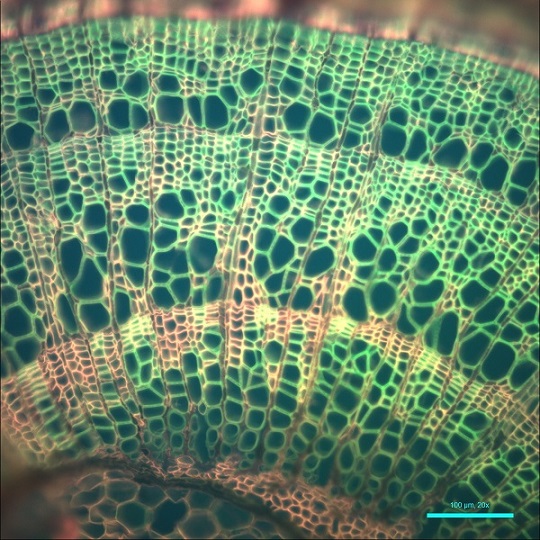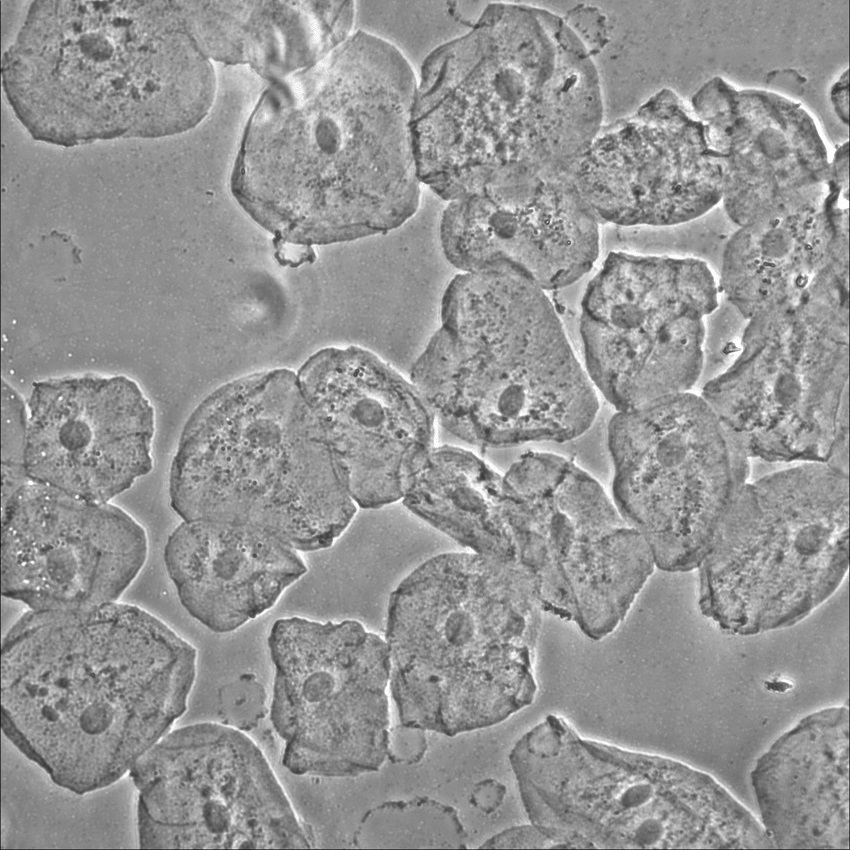LS Microscopes Accessories
Objective Lenses
Etaluma offers many options of objective lenses for all your imaging needs.
Accessories
Objective Lenses
The LS Microscope (Lumascope) product line uses infinity corrected, Royal Microscopy Society (RMS) threaded objectives with a 45 mm parfocal distance. We offer a family of objectives that provides a range of price-performance (see Objectives Offered Table below). You may also be able to use your own objectives, including those typically used in upright microscopes. If RMS threaded, they can be installed directly, or they may work with an objective adapter (inquire at Etaluma). However, they should always be infinity-corrected in order to achieve high resolution.
Coverglass Correction
Objectives are corrected for different thicknesses of material between the objective and sample (referred to as cover glass thickness or CGT) and thus should be considered when choosing objectives. If the material is a coverslip or bottom of a glass bottom microplate, the thickness is 0.17 mm. If a microscope slide or plastic microplate well bottom, the thickness will likely be 1 mm but should always be confirmed. The material thickness correction (often referred to as coverglass correction) is typically shown on the objective body and listed for each objective in the Objectives Offered Table below. It may also be possible to adjust the material thickness in order to use a certain objective, e.g., by inverting a microscope slide with mounted coverslip so that a higher magnification objective corrected for 0.17 mm can be used, or by switching to a glass bottom microplate from a plastic bottom microplate.
Tila stem auto-fluorescence on LS620 3-color fluorescence microscope
| Important Objective Characteristics | |||||
|---|---|---|---|---|---|
| Plan Achromat | Objective type corrected for spherical and chromatic (red & blue) aberrations | ||||
| Plan Apochromat | Objective type with highest degree of correction for spherical and chromatic (red, green and blue) aberrations | ||||
| Plan Semi Apochromat | Objective type with spherical and chromatic aberrations close to Plan Apochromats | ||||
| Numerical Aperture (NA) | A measure of the amount of highly diffracted image-forming light rays captured by the objective; objectives with higher NAs produce a more highly resolved image | ||||
| Working Distance (WD) | Distance from the objective front lens to the closest surface of a coverslip when specimen is in sharp focus; in general, WD decreases as magnification and NA both increase | ||||
| Infinity corrected objectives | Focus at infinity; offer long working distances and allow placement of optical components such as optical lenses or optical filters into the optical path | ||||
| Field of View (FOV) | Area of the specimen captured by the image | ||||
| Parfocal | Distance between the objective mounting plane and the specimen | ||||
Fluorescence and Brightfield
The objectives optimal for your application depend on your samples, labware and resolution desired. In general, the better the objective, the better the resolution. With regard to fluorescence, high resolution images can be obtained using the Meiji Plan Apochromat objectives. However, the Olympus collared objectives are the most versatile because the cover glass thickness (CGT) correction can be adjusted from 0 mm to 2 mm, allowing imaging through a full range of labware including coverslips, slides, glass and plastic bottom slides, flasks, and Petri dishes.
If you do not see objectives below that meet your needs, inquire at Etaluma. For example, some objectives are available in long working distance (LWD) versions (typically with an increase in price). These may be denoted “TC” for tissue culture, indicating they are appropriate for most labware thicknesses.
We do not recommend using very inexpensive objectives because they can auto-fluoresce at lower wavelengths, adding significantly to image background.
Use of Oil Immersion
As with most 100x objectives, our 100x objectives require oil immersion. Microscopy oil increases the numerical aperature (light collection efficiency) by matching the refractive index of the lens and eliminating interfacial losses. Oil immersion objectives work well on LS Microscopes. Because 100x objectives typically have a coverslip correction of 0.17 mm, microscope slides should be inverted so the coverslip is toward the objective.
| Objectives Offered by Etaluma for LS Microscopes | ||||||
|---|---|---|---|---|---|---|
| Etaluma Part # | Magnification | Type | NA* | WD^, mm | Cover Glass Thickness, mm | MFR & Part # |
| ELL0025MA830 | 2.5x | Plan Semi Apochromat | 0.07 | 5.7 | 0.17 | Meiji MA830 |
| ELL0004B522 | 4x | U Plan Fluorite | 0.13 | 17 | Olympus UPLFLN4x | |
| ELL0010B524 | 10x | U Plan Fluorite | 0.3 | 10 | Olympus UPLFLN10X2 | |
| ELL0020B525 | 20x | LWD U Plan Fluorite | 0.5 | 2.1 | 0.17 | Olympus UPLFLN20X |
| ELL0020B375 | 20x w/c-collar | LWD U Plan FL | 0.45 | 6.4-7.6 | 0-2 | Olympus LUCPLFLN20X |
| ELL0040B377 | 40x w/c-collar | LWD U Plan FL | 0.6 | 2.7-4.0 | 0-2 | Olympus LUCPLFLN40X |
| ELL0060MA969 | 60x | Plan Achromat | 0.8 | 0.29 | 0.17 | Meiji MA969 |
| ELL0F100MA983 | 100x | Plan Apochromat | 1.25 | 0.2 | 0.17 | Meiji MA983 |
| *NA, numerical aperature; | ||||||
| ^WD, working distance | ||||||
Phase Contrast
Phase contrast objectives have a phase plate with a ring shaped phase shifter at the rear focal plane. This ring is matched to a ring annulus at the front focal plane of the phase condenser. With Etaluma’s Phase Contrast Accessory, the appropriate annulus (mask) is contained within a slider. The slider also contains an open position (no mask) so that phase objectives can be used for fluorescence and brightfield as well.
Human buccal cells on LS620 using Phase Contrast Accessory and 20x objective
| Phase Objectives Offered by Etaluma for LS Microscopes | ||||||
|---|---|---|---|---|---|---|
| Etaluma Part # | Magnification | Type | NA* | WD^, mm | Cover Glass Thickness, mm | MFR & Part # |
| ELL0004C522IPC | 4x | U Plan Fluorite Phase IPC | 0.13 | 17 | 1 | Olympus UPLFLN4XIPC |
| ELL0010C144IPC | 10x | Achromat Phase IPC | 0.25 | 8.8 | 1 | Olympus CACHN10XIPC |
| ELL0020C145IPC | 20x | LWD Achromat Phase IPC | 0.4 | 3.2 | 1 | Olympus LCACHN20XIPC |
| ELL0040C147IPC | 40x | LWD Achromat Phase IPC | 0.55 | 2.2 | 1 | Olympus LCACHN40XIPC |
| *NA, numerical aperature | ||||||
| ^WD, working distance | ||||||
Copyright © 2024 Etaluma, Inc. All rights reserved.


